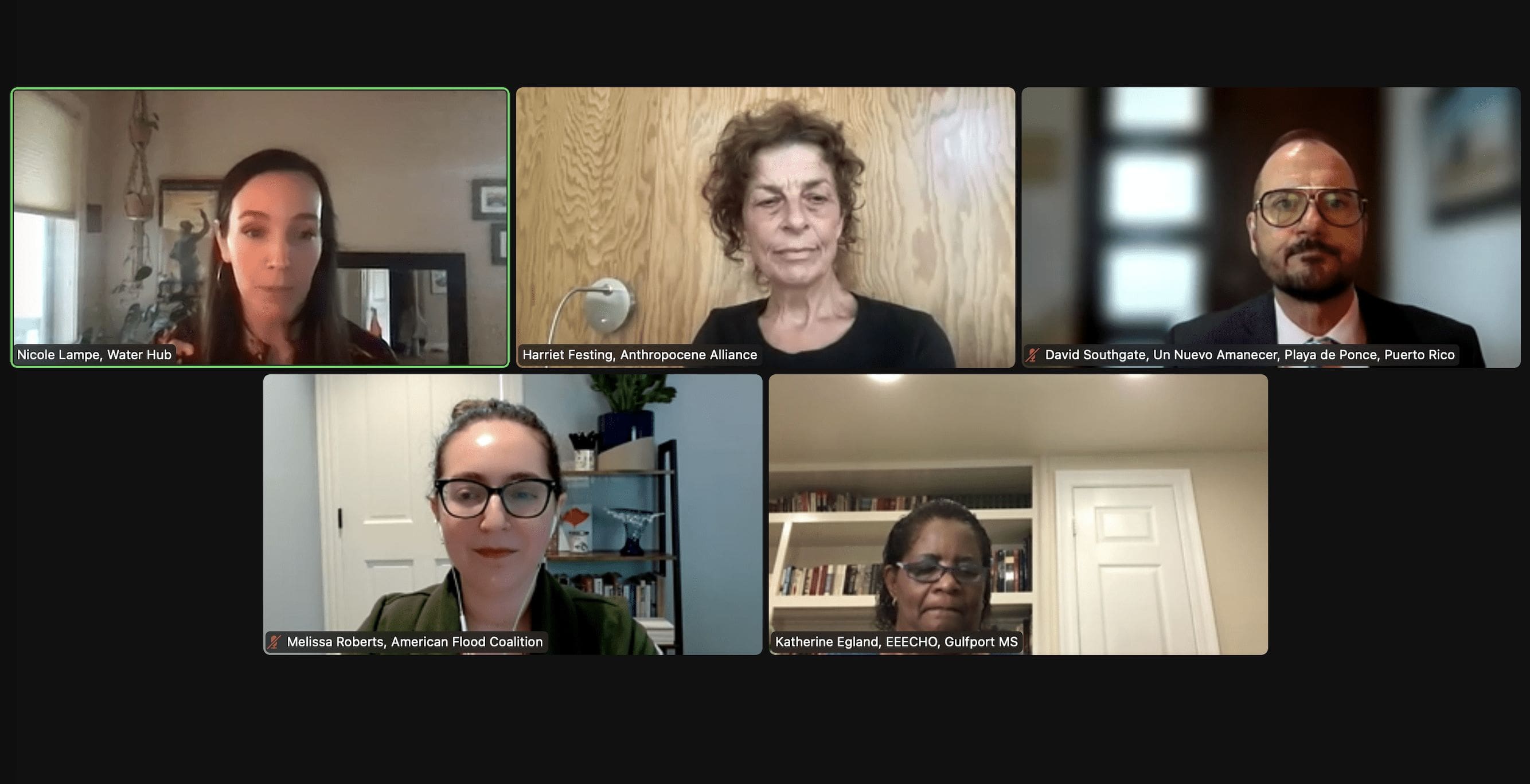It’s been an exceptionally wet winter in much of the U.S. From atmospheric rivers in California, to historic snowpack in the Rocky Mountains, to sudden flooding after drought in the Mississippi River Basin, a lot of communities are dealing with high waters. And it’s not just rain and show causing flooding: new studies found sea levels along the US Gulf coast are rising three times faster than the global average.
FEMA recently announced that flood insurance rates will more than double across the country, rising up to 600% in some counties in recognition of previously underestimated risk. This increase could price out many homeowners and perpetuate the cycle of flooding and poverty.
While the weather is getting wilder everywhere, some communities are more prepared than others. Research shows historically redlined areas have more pollution, higher flood risk, and less greenspace. Black and Brown communities have borne the brunt of past flooding and often received less federal aid after disasters.
Now, millions in federal infrastructure dollars are available for flood resilience, and some funds are at last flowing to frontline communities. This money will allow low-lying areas to shore up natural defenses like wetlands, forests and reefs, upgrade aging sewer systems, and replace pavement with plants that help to soak up rain and runoff.
Below, we share highlights from a May 23 panel discussion on Flood Justice in Frontline Communities.
Environmental justice leaders speak out
Melissa Roberts, American Flood Coalition:
“What we were hearing from a lot of local leaders was, ‘honestly, this problem is so difficult. I’m gonna hope the next flood happens when I’m not in office,’ because they were being given so little support.”
“In our current system, unfortunately, you need money to get some. You need to be able to pay for consultants and site studies and grant writers to have a shot at getting federal dollars.”
“Getting federal dollars is a marathon… but I think we need to step back and say, ‘why are we making all these communities run a marathon when it should be a 5K?’ We have to make sure these programs actually serve the communities that need it most on the frontlines.”
Katherine Egland, Education, Economics, Environmental, Climate, and Health Organization (EEECHO):
“Even in heavy rains, you have Forest Heights Baptist Church that immediately starts putting sandbags at the doors. A couple of years ago, I went there after a hard rain and there were live fish swimming in the parking lot of the church.”
“If you look at a map of the red lining and the map of the flood-prone areas, they’re gonna be virtually the same.”
“And so this is why, you know, federal funding is so important. People invested in their property, and they’ve handed them down, too, from generation to generation. This is home, so a buy-out is not an option for most people.”
“We’re saying that this is the environmental justice administration. But we can’t at the same time fund development that’s going to exacerbate flooding, and going to contaminate these precious waterways.”
Harriet Festing, Anthropocene Alliance:
“It’s sort of a mixed story: a story of extraordinarily inspiring leaders. Some leaders who are now finally getting access to federal funding. We are tremendously grateful for that funding. But also the total inadequacy of the federal government to put in the regulations that need to be in place to actually continue to protect them from harm.”
“Upstream development is making their problems worse. That could be halted by updates in the National Flood Insurance Program regulations. And continually, homes that flood keep selling and get recycled to new homeowners who don’t know of the problem. So, it’s like this vicious cycle, and it’s really tragic.”
“When you start working with flood-impacted communities, you start working with environmentally contaminated communities as well, but I mean particularly when you’re focused on low-income communities. There’s such a strong crossover between flood risks, flooding, and development of petrochemical industry, superfund sites, mining, logging, and destruction of wetlands.”
David Southgate, Un Nuevo Amanecer Inc.:
“Even a tropical rain event like the one that occurred just 2 days ago, neighbors in the Puerto Viejo communities within our barrio as well as Salestral, friends and neighbors like Maria and Miriam, as well as Miguel Ángel had to cope with flooding, but not just that, they also have to cope with the aftermath of the flood, sewage tainted waters that left an incredible stench and a health hazard of sewage.”
“This is America, and this is, I think, what environmental racism looks like… The government, in some senses, has long abandoned communities like ours. And now it’s up for the people on the front lines of climate change to adapt on their own.”
“In the areas where it’s flooding, it seems to make sense to not put housing there, but to actually use the lands there for another purpose such as rain gardens to sink the water rather than spread it out across cement or try to push it out to sea with tubes that will become obsolete with time and pumps that just frankly don’t get maintained and don’t switch on when they’re supposed to.”
To keep up with our latest offerings, water news, and partner celebrations and collaborations, sign up for our Water Cooler newsletter and give us a follow on Twitter, LinkedIn, and YouTube!
